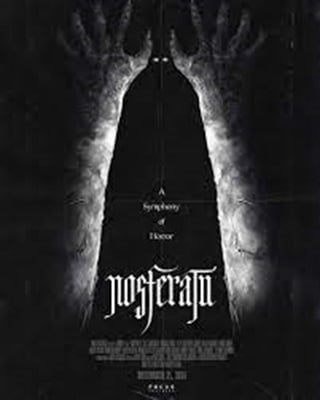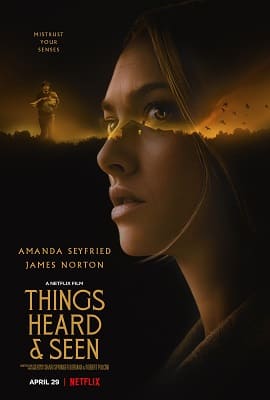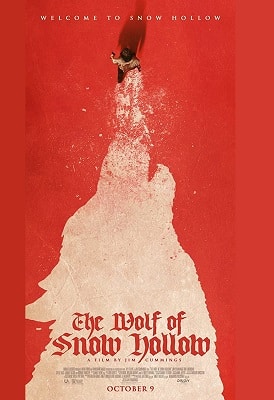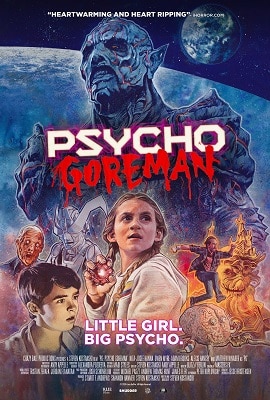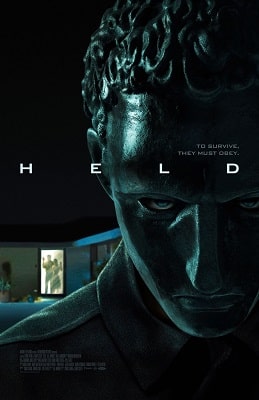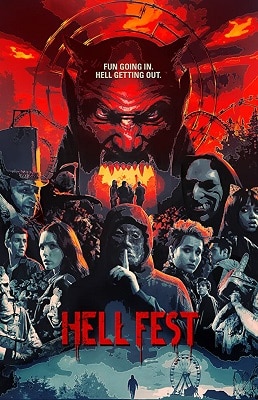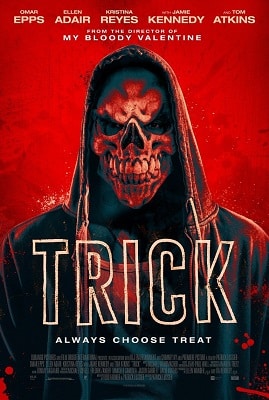Movie Review
Nosferatu
reviewed by Nolan Yard
nolanyardwriter.wordpress.com
Months shy of his 42nd birthday, it’s hard to fathom how such a young filmmaker as Robert Eggers could envision and implement impressive gothic auteur works. With The Witch, The Lighthouse, and The Northman under his belt, he felt seasoned enough to tackle a foundational archetype in a century’s later remake of Nosferatu. His ambition landed in abundant fields, for this horror project certainly grew from seeds to a resplendent crop.
Eggers and his team have created an Oscar-worthy, if not Oscar-winner for multiple categories, horror film—a feat almost a shot in the dark in an industry dominated by other cinematic genres. The film’s use of setting and backdrop, impeccable casting, an insidious villain and the macabre, and its use of film as art make it the dark horse for being 2024’s best.
We begin our cinematic journey in Wisberg, a fictional town in 1838 Germany, a world painted in detail with gabled buildings, cobbled and muddied streets, and top-hat adorned men and brocaded dress-wearing women. The film takes the audience on horseback via Thomas’ character across the rural countryside and to the boulder incrusted Carpathian Mountains where Count Orlock’s gothic castle towers at the cliff’s edge.
Every detail of historical backdrop is siphoned for the audience from the elaborate wardrobes to the clanking of horse-drawn carriages to the thick Romanian accent of the film’s villain. The audience feels whisked back to another century, another place and time entirely.
Though the cast is small, the choice of actors fits like the typeface on a manuscript’s final printing. Nicholas Hoult as Thomas Hutter, our feckless solicitor and husband to Ellen who travels to the Count, is sympathetic and tenacious in his use of emotion. Lilly Rose-Depp is outstanding in her portrayal as innocent Ellen, incessantly ravaged by the presence of a centuries-old malevolent entity. Her scenes of hair-raising possession opposite those of heart-crushing agony for her loved ones are Oscar-worthy.
The show-stealers are Willem Dafoe as Professor von Franz and Bill Skarsgard as Count Orlock. Dafoe’s presence, in any film he’s in, magnifies the other characters and story. Von Franz imbues a sense of message in the fight, both inside and outside the human psyche, of good versus evil and his role’s tenacity heightens the stakes of the story. Skarsgard’s portrayal as the enigmatic evil that personifies a vampiric Transylvanian lord is near flawless.
Everything Orlock does emits a visceral response from the audience – his movement, posture, facial expressions, tone of voice, and even hunched shadow creates a shudder in the most thick-skinned of viewers. His character is horror personified, and the film’s other scares are executed with panache whether through the long-burning candle of suspense, the grotesqueness of Orlock’s minion Herr Knock, and the shadows and contrasting light that surround our villain’s skulking form.
Nosferatu’s strongest brushstroke is the use of the lens as a canvas. This is film as art at its finest. Every angle, vantage point, and positioning of the camera appears meticulously conjured. The use of color and contrast, a masterclass in thematic prevailing darkness and fragile light. Texture in detail presents itself in a variety of settings from the aristocratic mansion to the gothic castle, the murkiness of a ship’s hold to the openness of a city’s busy streets. The juxtaposition of Eggers’ focus on ethereal dreamscapes inhabited by the Count to the stark reality of his fulfilled machinations rival the impeccable use of shadow and light.
It is a valid question whether, like the original work on which this film is based, this accomplished auteur piece would have still surpassed budget as an avant-gardesque silent film for the modern age. Yet, the artful use of sound and score are also ingredients for this cadaverous beauty. Eggers has shown us already what he can do with the camera, but now he displays how a dynamo takes the gothic and truly dazzles. If this is Robert Eggers’ masterpiece, one wonders and anticipates what other paints he has left in his palette.

